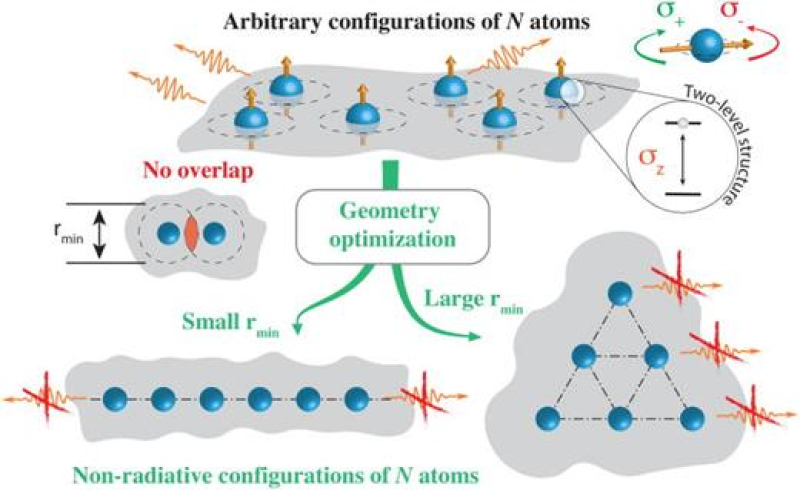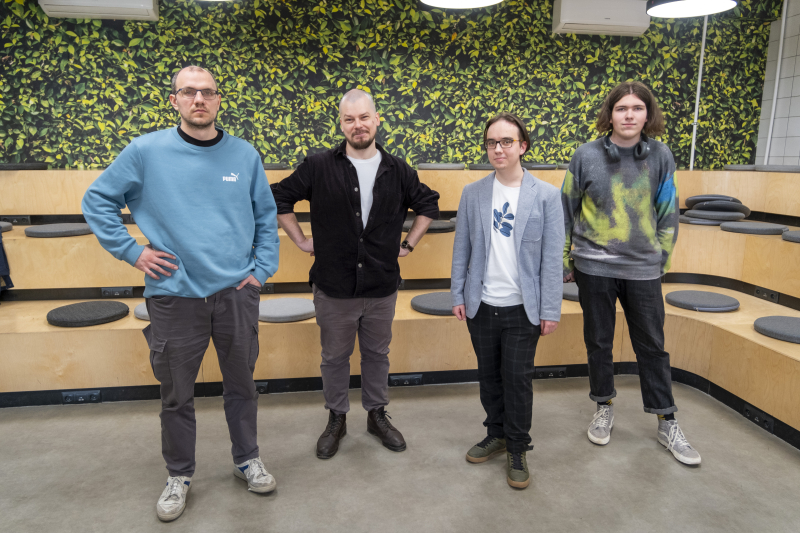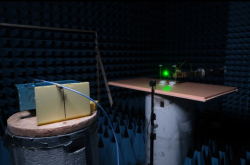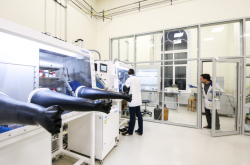Quantum simulators (or computers) are a promising means of solving complex computational tasks such as the encryption of data with quantum cryptography. Compared to conventional computers, quantum ones rely not on bits (which can have two states: 1 and 0), but on qubits (which can have many states). It is thanks to this property that quantum computers are expected to be capable of processing all states simultaneously, thus producing solutions faster than regular PCs.
One major challenge on the way towards quantum computers is spontaneous emission – the possibility of a qubit being destroyed at any moment by emitting into its environment. This phenomenon shortens the life of quantum states and essentially renders the recording of information impossible in quantum systems. Large atomic structures (containing dozens or hundreds of atoms) are typically used to suppress spontaneous emission. Earlier, scientists from ITMO had discovered 2D atomic arrays that can support quantum states of maximal longevity; however, the optimal design of structures with randomly located particles remained unknown.
This time, through an optimization of geometry, the physicists were able to acquire structures that can support the quantum states longer by dozens and hundreds of times. For this, they used evolutionary algorithms (AI algorithms that model natural selection processes) to create a program that can predict the appropriate system parameters. Compared to other solutions, in which the atomic structures had predefined geometries, in this one the AI was responsible for identifying the correct atom locations.
The suggested solution determines the geometry of molecules made up from ultracold atoms. In a sense, the team has provided a manual for assembling long-lived quantum systems for information recording and storage: the structures predicted by the AI can be used to develop quantum memory algorithms.

A schematic of the algorithm that determines the optimal design of long-lived quantum structures. Image courtesy of the authors
In their work, the authors considered two variables: the number of atoms and the minimal space between them. Using the algorithm, they determined the optimal geometry for different interatomic distances: 1D chains and fragments of square and triangle arrays. All of these configurations can support non-radiative – long-lived – quantum states.
“There are two paths by which this project may continue. Until now, we have calculated the parameters for single-photon structures; next, we will look for the same things for two-photon tangled states: they can contain twice as much information, as well as be used in quantum communications for information transfer. Moreover, we’d like to improve our algorithm by enabling it to compute systems with a greater number of atoms,” shares Ilya Volkov, one of the paper’s authors and a PhD student at ITMO’s School of Physics and Engineering.

The paper's authors (left to right): Roman Savelev, Ilya Volkov, Stanislav Mitsai, Stepan Zhogolev. Photo courtesy of the subjects
Thanks to this solution, the researchers will be able to extend the recording time of quantum states, thus opening up new possibilities for their application, including the development of quantum computers.
Reference: Ilya Volkov, Stanislav Mitsai, Stepan Zhogolev, Danil Kornovan, Alexandra Sheremet, Roman Savelev, Mihail Petrov. Non-radiative configurations of a few quantum emitters ensembles: Evolutionary optimization approach (Applied Physics Letters, 2024)
This research project is supported by the Russian Science Foundation grant No. 21-72-10107.





